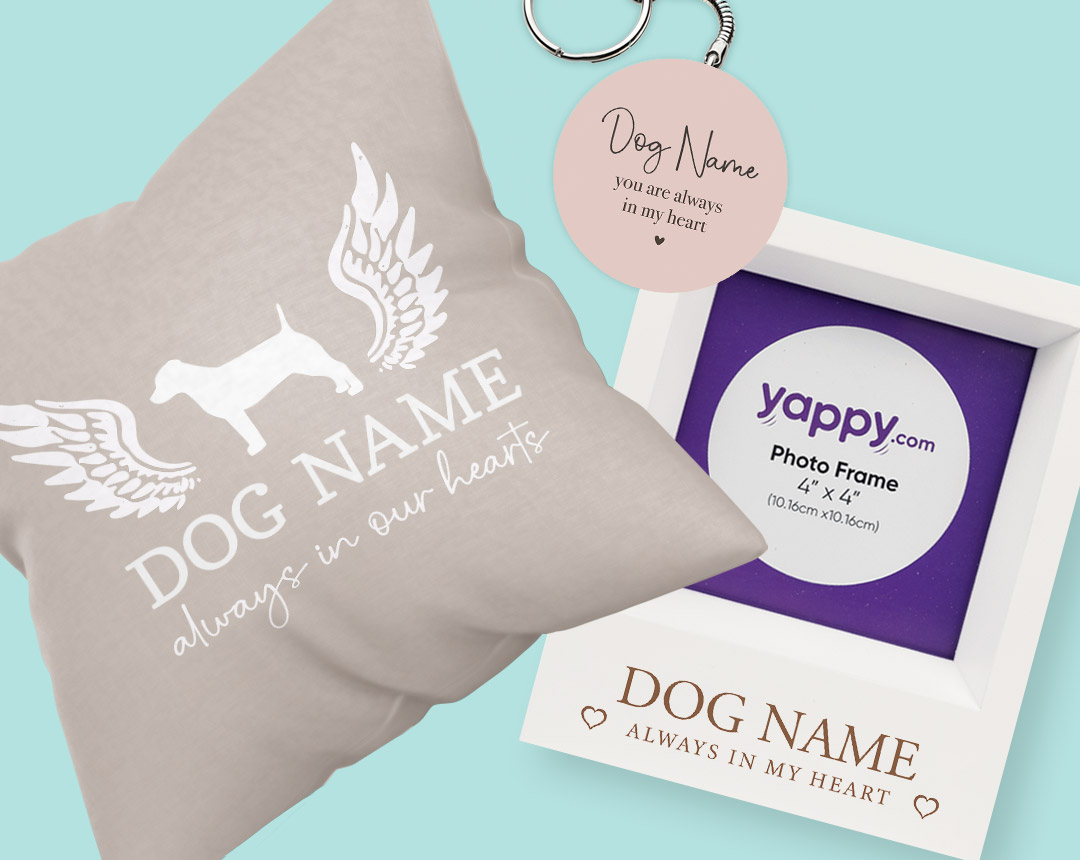Create Your Beagle's Shop
Beagle Breed Summary
Playful, Happy, Loud, Energetic and Friendly
The name 'Beagle' is thought to have come from the French word 'beugueule' meaning 'open throat', which would make sense due to this breeds ability to create such a loud bark! They are a very historical animal, with similar dogs being documented in 400 B.C. But it wasn't until around 1307 that this dog looked familiar to the one we know today, then known as the Glove Beagle, which could reportedly sit in the palm of your hand! Elizabeth l reigned from 1533 and was said to have kept Pocket Beagles, standing at only 9 inches high! And they soon became popular painting subjects. This breed wasn't a particularly good hunter and it is only because of farmers in the United Kingdom who used the breed to hunt rabbits and hares, that they still exist today. Nowadays, you are more likely to see this doggy chilling at home with its 'hooman' family, a well-deserved rest from all their hard work in their pasts.
| Kennel Club Group | Hound |
| Lifespan | 12 - 15 Years |
| Height (at the withers) | Males and Females 33cm - 41cm |
| Weight | Males 10kg - 11.5kg, Females 9kg - 10.5kg |
| Coat | Smooth, Tight, Very Waterproof |
| Colour | Badger Pied; Black and White; Blue, White and Tan; Hare Pied; Lemon and White; Lemon Pied; Red and White; Tan and White; Tricolour; White; any of the these 'Mottled'. |
| Eye colour | Brown |
| Common health issues | Steroid Responsive Meningitis (SRM), also known as Beagle Pain Syndrome or Stiff Beagle Disease; hip dysplasia; epilepsy; Musladin-Leuke Syndrome (MLS); NCCD; Factor VII and IGS; Cherry Eye; Beagle tail, also known as limber tail or limp tail. |
| Other Names | English Beagle |
Beagles are very happy and playful dogs and let their noses lead them through life. They have around 220 million scent receptors in their noses, as compared to 'hoomans' who have just 5 million, which is why they are often used at Airports to help in finding contraband. In fact, over 20 international airports now employ 'the Beagle Brigade' to help keep their borders safe. One thing to watch with these guys is there unusually loud bark. Although they're not yappy, one bark will be enough to wake up the neighbours, and potentially two doors down as well! Because they were originally pack dogs, they get on very well with other dogs and would probably enjoy life more if they had another furry friend to spend time with. They also do very well in apartments due to their small size but will require at least an hour of exercise a day to keep them happy chappy's!
The Beagle's origins can be traced back to around 5th century BC in Ancient Greece. The writer Xenophon, who was born in around 430BC, in his work 'Treatise on Hunting' describes Beagle-like dogs that would track their prey by scent, while hunters followed on foot. It is possible that the Romans brought small, rabbit-hunting hounds to England when they invaded, which they cross-bred with indigenous hounds.
There were certainly small hunting hounds around in England at the time of King Canute, who produced a law code in 1016. These laws include the Forest Laws, which dictated who could hunt and how. In this law code, small hunting hounds were exempted from the edict that said that any dog capable of running down a stag should have one paw mutilated to prevent them from doing so.
William the Conqueror is believed to have brought the now extinct Talbot Hounds to England with him in 1066. The Talbot Hound was a white, slow, deepthroated scent hound, which was descended from the St Hubert Hound, which in turn dated back to the 8th century. It is thought that the Talbot Hound was bred with Greyhounds to increase their speed. This created the Southern Hound, which appears to be the ancestor of the Beagle.
The origin of the name Beagle is unclear. In medieval times, it was used as a generic term for any smaller hound. There are three possible theories relating to its origins: that it came from the French word beugler, meaning 'to bellow'; that it came from the Old English word beag, meaning 'small'; or the German word begele, which translates as 'to scold'.
Beagles were popular hunting dogs in the UK from very early in their development, although they weren't necessarily the dog we would recognise today. During the reigns of Edward II (1307-1327) and Henry VII (1485-1509), a very small version of the Beagle, known as Glove Beagles, were commonly used. Their name reportedly came from the fact that they were small enough to be held in one gloved hand. Elizabeth I also had packs of these Pocket Beagles, which stood at 9 inches tall, which were shown as being short-legged with pointed noses. However, they fell out of favour over time as fox hunting became more popular, as they were too slow to keep up with the hunt, and were replaced by the Foxhound.
While the Beagle was no longer popular with the elite, they were with farmers and landowners in the south of the country, who used them for hare coursing and rabbit hunting. Their numbers dwindled, however, until the 1830s, when the Reverend Philip Honeywood bred his own pack. While there were two other Beagle kennels at the time, it was his pack that became the founding stock of the modern breed. He focused on hunting ability, and it was a Thomas Johnson, who refined the Beagle's appearance. Initially, there were both smooth and rough-coated Beagles, although now only the smooth-coated version exists.
At around the same time, the Beagle was imported to America, who wanted to improve the appearance of their dogs. While the English version was around 15-17 inches tall, American breeders preferred a smaller version, meant for rabbit hunting. A Willet Randall in New York developed the Patch Beagle in the 1880s, which is known for being predominantly white with a large, tri-coloured patch. Today, the term Patch Beagle is used mainly to refer to lemon and white or red and white beagles.
The American Kennel Club and the first Beagle breed club were founded in 1884, with the first dogs being registered that year. In the UK, by 1887, eighteen packs of Beagles were in existence. In 1890, the Beagle Club was established, which drew up the breed standard. The Association of Masters of Harriers and Beagles was formed in 1891, which ensured the continued existence of the breed. Just a decade later, there were 44 packs in the UK. In America, in 1916, five members of the National Beagle Club purchased 508 acres of land in Virginia for holding field trials. This property is still used for that purpose today.





























